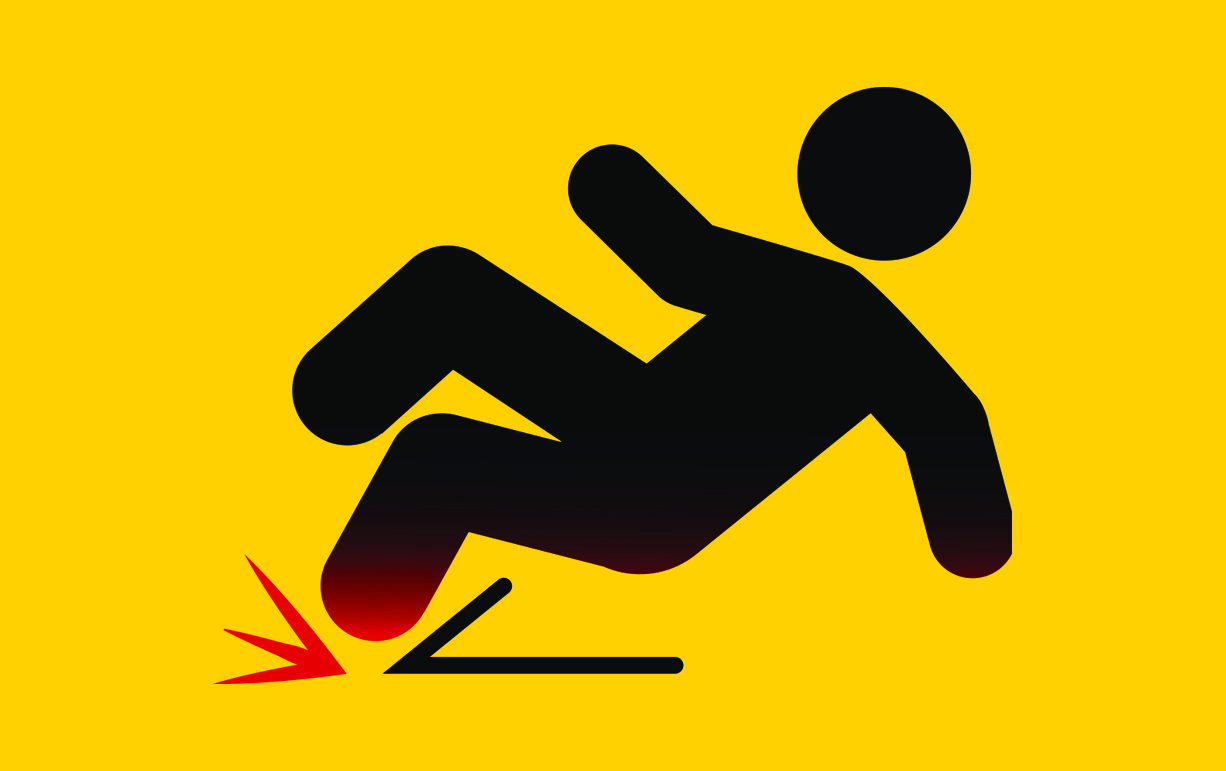10 Simple Ways to Prevent Slips, Trips, and Falls
 Slips, trips, and falls are the leading causes of time lost in the workplace. The Occupational Safety and Health Administration (OSHA) has cited fall protection standard violations more frequently than any other standard.
Slips, trips, and falls are the leading causes of time lost in the workplace. The Occupational Safety and Health Administration (OSHA) has cited fall protection standard violations more frequently than any other standard.
These types of hazards are serious issues for workers and employers, but their risk can be minimized with 10 simple ways to prevent slips, trips, and falls. With the risk of injury ranging from a simple sprained ankle to serious injury or death, fall protection and prevention should be everyone’s top priority.
These 10 ways to prevent injury should be considered best practices in every industry.
- 1. Wear proper footwear
- This tip is simple enough, but is often overlooked. Encourage your team to wear comfortable, fitted footwear that has enough traction on the bottom.
- 2. Create traction
- It doesn’t take much for the ground to become slick, especially on sloped and smooth surfaces. Using anti-slip mats and tape can help to add traction when materials like dust and grease cannot be cleaned up or otherwise removed.
- 3. Keep it clean
- A clean workplace is usually a safe one too! Take the time to pick up boxes, ropes, and cords, and clean up spills to keep workers on their feet. This is especially true in work areas and in aisles.
- 4. See accidents before they happen
- Poor lighting in basements and stairways can cause anyone, at work or home, to misstep and trip. Adequate lighting makes it easier to avoid hazards (and also reduced eye fatigue). At home, leave a porch light on when leaving in the evening. You’ll be rewarded with a well-lit entryway when you return later that night.
- 5. Block off temporary trip hazards
- Use barricade tape, cones, and other floor safety products to restrict access to areas that present temporary slip, trip and fall hazards.
- 6. Mark out clear passageways
- Use floor marking tape to show where walkways are and that these areas should be kept clear. Tape out areas around swinging doors and stairways to help others avoid these hazards too.
- 7. Post safety signs to remind everyone of hazards and policies
- Posting the right safety signs will help to alert workers of trip and fall hazards, remind them to check ladders and scaffolding, and alert them to your policies for a clean workplace.
- 8. Gear up with the right PPE
- Fall arrest systems are important and essential parts of any fall prevention plan. Remind workers to wear the right PPE with OSHA compliant fall protection signs.
- 9. Inspect first, climb second
- Before you climb a ladder or scaffolding, inspect your set-up. Inspections require a critical examination from someone properly trained. If a ladder or scaffolding is in bad condition, tag it for repair or removal so no one will accidentally use it.
- 10. Train every employee to recognize and avoid slip, trip, and fall hazards
- Like any other safety hazard, slips, trips, and falls can be highlighted during safety training. Make sure that everyone can recognize and avoid slip, trip, and fall hazards and that they use PPE correctly when necessary.
Like any other safety hazard, slips, trips, and falls can be highlighted during safety training. Make sure that everyone can recognize and avoid slip, trip, and fall hazards and that they use PPE correctly when necessary.
With these types of hazards being common to every type of work environment, it is important to notify supervisors or maintenance crews of slip, trip, and fall hazards when they are present. With so many ways to avoid or lessen the severity of slip, trip, and fall hazards, hopefully businesses will take steps to abate this hazards and less time will be lost by workers.
